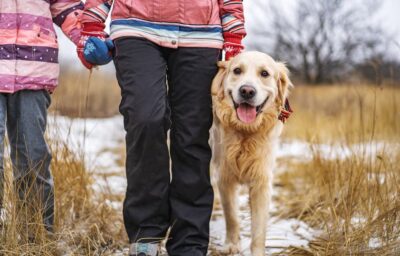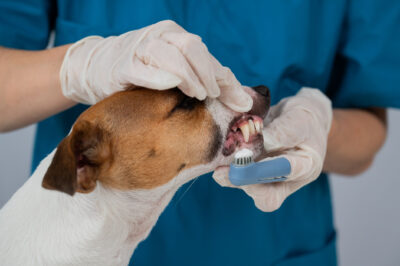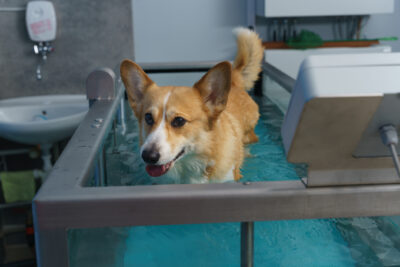8 Tips for a Cat Proof Christmas Tree

I grew up with a well-behaved cat who in my memory sat very demurely under the Christmas tree, simply basking in the glow of the white lights. But when the time came to erect my own tree in the company of two 6-month-old kittens, visions of shattered ornaments and howling cats clinging to the trunk danced in my head. So, for Cosmo and Stella’s first Christmas, my husband and I still brought home a real tree but hung a single wooden ornament on it — Danny DeVito.

Between the exhaustion of navigating Christmas during the first year of the Covid-19 pandemic and the hilarity of this “Danny DeVito tree,” we left it as is that season. And in the end, our kittens could care less that the tree was there; go figure.
But that is far from the usual circumstance between cats and Christmas trees. For many felines, a tree suddenly appearing for a few weeks each year is an undeniable fever dream. “Not all cats can be around Christmas trees safely,” Jennifer Van de Kieft, a New York City-based cat behaviorist, tells us. “Cats are part of our families, and their unique needs should be taken into account. Some will chew on the tree, lights, or decorations, which can be toxic or dangerous. To help prevent that, try to meet your cat’s needs in an alternative way.”
So how do you protect your kitty and your sanity during the most wonderful time of year? We’ve compiled our top tips for a cat proof Christmas tree — even if your kitties are determined to land on Santa’s naughty list.
Why Do Cats Like Christmas Trees?
Even if your fur baby is as domesticated as they come, most cats have retained some wild instincts and that includes climbing trees. Felines have a natural inclination to perch from a high vantage point and the top of a tree definitely meets that brief. Needless to say, bringing a live tree — or even a fake replica — into your cat’s domain and then bedecking it with shiny, swinging objects is a temptation that’s nearly impossible to resist. After all, curiosity is a cat’s most notable trait.
Of course, every cat is different (and you know them best), so if your feline friend is particularly sensitive to smell, then maybe an artificial tree could help reduce the urge to investigate. Along the same lines, if you have a kitten who is highly motivated by toys, then eye-catching ornaments might be their particular Christmastime kryptonite. The thing about Christmas trees is there are potentially many intriguing reasons why cats might want to sniff around or scale them, which can make holiday decorating a bit dangerous for your pet.
Regardless of the reason that your kitty is infatuated with your festive evergreen (and who could blame them), it’s vital to know how to keep cats out of a Christmas tree — and we’re here to help. Read on for important information about Christmas tree and cat safety.
8 Tips for a Cat Proof Christmas Tree

Leave your tree bare for a few days
Before you essentially point a neon sign at your tree that tells Whiskers to “Climb This Way!” you might want to let them acclimate to the tree au natural. Especially if this is your pet’s first experience with our harebrained human tradition of bringing the outside inside, you should take it slow. Let your cat adjust to the idea of the new object and its boundaries in your home before throwing twinkling lights, enticing wires, and irresistible baubles into the mix.
Be selective about your ornaments — and their placement
If you are the type of person who collects keepsake decorations, then hang wisely. Have a cat who can typically be found just beneath the tree? Consider placing more valuable ornaments on higher branches. On the other hand, if your kitty has a known track record of escaping to the top of Tree Mountain, then you might not want to risk an heirloom ornament making a fall from such great heights. Either place these sentimental objects on the lower third of the tree or be creative and display them elsewhere — perhaps in a china cabinet — entirely out of paw’s reach. Cats in Christmas trees also pose a greater risk to their safety because they might knock it over.
Consider the merits of a fake tree
Some of us (I’m certainly guilty) refuse to bring home anything other than “the real thing” as the crowning glory of a Christmas tree. But everything that makes a live tree feel authentic — the pine smell, the falling needles — are the same characteristics that might lure your cat. If you know that your cat can’t handle the allure of a real tree, take solace in the knowledge that artificial trees have gotten quite deceptive, and a pine-scented candle or room spray can solve for your seasonal aromatherapy. Even if you do end up chopping down your own tree, a fake tree could serve as a great decoy if you place it in the same room or nearby.
“When my cats were younger, I got a cardboard cutout Christmas tree that I added lights to,” Van de Kieft says. “Not only was it safe, but it barely took up space.” If you suspect that your pet is still sniffing too close, employ the use of citrus (which is one of the smells cats hate). Orange peels are festive for Advent and might do the trick scattered under the tree. If the peels lose their scent or are ineffective, you can try a bitter apple spray that’s sold at pet stores as a deterrent.
Just say no to tinsel
Even though the use of tinsel as a holiday decoration has been largely phased out, if you still find the shimmery look in vogue, consider your cat. The grass-like quality of tinsel makes it appealing to your pet, who might be tempted to lick or ingest it. The material is very difficult to digest and could easily get caught in their airway or stuck in their intestines. Modern tinsel is mostly made of plastic coated with a thin layer of metal, i.e. not something you want finding its way into your cat’s throat or tummy.
Fortify the tree skirt
The tree skirt typically wraps around the tree stand and is where gifts are placed awaiting Christmas morning. In other words, it’s prime real estate under the Christmas tree. If you are celebrating using a real tree, know that Christmas trees are not toxic to cats, but pets do need to be kept away from the water in the tree stand. The bacteria that grow in this water can be toxic to your cats and therefore should be barricaded to the best of your ability. Offer a bowl of fresh water near the tree. Some pet owners have found luck discouraging furballs with aluminum foil under the tree or wrapped around the trunk. Another way to deter curious kittens from beneath the tree is to place presents in another location. The crinkle of wrapping paper and the call of those bows and ribbons is just an added temptation in a place where your cat shouldn’t be.
Don’t plug in the bottom strand of lights
Most Christmas trees are illuminated, but to keep your cat safe you should be sure to keep the lower string of lights unplugged from an electrical outlet. In the event your pet decides to chew on the wire, this measure could prevent them from being burned or electrocuted. If you know that your four-legged fur baby is inclined to chew on things like string or wire, then you might want to take the added step of lightly spraying your strands with a cat Christmas tree repellent like that bitter apple spray.
“I find hungry cats like to chew things, so ensuring your current feeding plan is satiating for your cat is key,” Van de Kieft adds.
Secure the tree
We mean this advice in more ways than one. First, you want to avoid the catastrophe of a toppled tree. Secure your tree to a wall with rope or bungee cords or place weights in or around the tree stand to reduce the risk of it falling. In addition to making sure your tree won’t tip over, it’s also an important safety measure to place it away from potential “launch sites” like couches or other furniture that could provide access to its branches in one big leap. Then, you might want to cordon off the area with baby gates or other barriers for persistent pussycats.
Offer a nearby alternative
Much like human babies, cats also react well to positive rather than negative reinforcement. Instead of scolding them when they get too close, offer something else to distract and captivate their attention. After all, it’s the holidays, so treat your kitty to some new toys but spread them out over the days and weeks leading up to Christmas so they always have something new and interesting to play with. How do you keep cats away from the Christmas tree? For the ultimate bait and switch, gift a new cat tree or perch and keep it near the location of your Christmas tree. Be sure to reward them when they choose the alternative over the tantalizing tree.
“If they like climbing, which is a very natural and normal behavior for cats, ensure they have lots of good options in the room with the cat tree,” Van de Kieft says. “If they are just plain bored, play with your cat at least once a day, but twice is better for an active cat. It might be a good time to add other enrichment such as food puzzles, tunnels, and some new toys so they don’t view the Christmas tree as their new toy.”
Cats and Christmas Trees: The Verdict

So, can cats and Christmas trees coexist? Is there such a thing as a cat-friendly Christmas tree? There’s no perfect answer because your cat’s reaction to “O Tannenbaum” will depend on your individual cat. For some, the reaction is akin to catnip while others remain shockingly indifferent to this literal outsider in your living room. Remember: You don’t have a bad kitty on your hands, just a naturally inquisitive one. If you have your heart set on a grand and gleaming Christmas tree each year, just try to be flexible with the final product and manage expectations when your otherwise calm cat beelines for this annual outdoor invasion.









